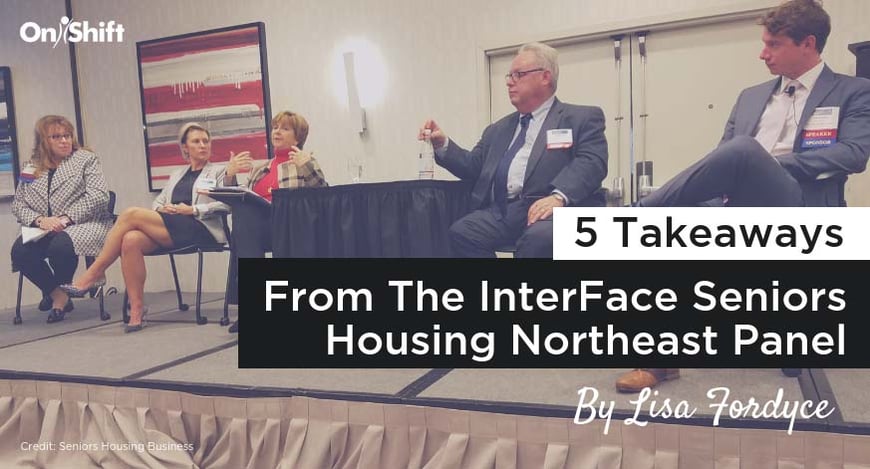
As you continue to plan for the year ahead, I wanted to share the key takeaways that came out of our discussion.
Don’t Underestimate The Human Element
We talked a lot about how to foster connections across an organization’s entire employee base. While there are obviously different levels of leadership in any given community, C-level folks and management should work to humanize themselves and appear approachable to all staff members.
A panelist who works for her family business told a story about her mother pulling her aside and asking that she stop wearing her “banker suits” to work. She told her that doing so might intimidate the employees and create a disconnect.
Impressions matter and making yourself relatable to staff can go a long way. It’s easy to do and a big win for organizations. Despite there being four different generations in the workforce, all people respond positively when they feel connected to other people -- those that treat them with respect, show they care about their overall well-being and recognize their special ability to impact those they work with.
At OnShift, we like to preach implementing the three-fact method in which leadership is encouraged to learn at least three facts about each employee. This could be something along the lines of a favorite hobby or how many kids they have. Simply collecting these tidbits of information encourages interaction and forms bonds between staff and management.
Improve Feedback & Communication Processes
We also discussed the importance of management not only collecting employee feedback but working diligently to follow up on comments and suggestions received. The feedback loop is a two-way street. If employees are going to do their part to offer it, management must do theirs for the loop to come full circle. Management should acknowledge employee comments, explain how they are addressing issues and when they can expect to see or to be a part of a change.
This principle was the driving force behind OnShift Engage, an employee engagement software that uses weekly pulse surveys to gauge employee satisfaction and collect feedback. Providers who have implemented OnShift Engage are able to uncover underlying issues that have the potential to hinder employee engagement and satisfaction. Many of the issues are often simple. For example, something like a supply closet not being properly stocked at the start of each shift can be easy for management to miss, but have a big impact on an employee’s day-to-day. Having a program in place to regularly capture feedback gives providers the transparency they need to address and correct problems, improving morale throughout their community.
Make Your Leadership Present At The Front Lines
Connecting leadership and staff is essential for gaining buy-in of an organization’s mission. Every level of your leadership team, especially direct managers, should interact with front-line staff members. They should be personally recognizing their hard work and achievements, along with hearing first-hand their challenges and ideas for innovation. When employees have a positive impression of your leadership, they can visualize that their company, not just their supervisor, cares about them and the residents they serve.
Additionally, a supervisor can act as an “ears to the ground” ally for employees. By working closely with their teams, they can deliver any feedback to the leadership team to ensure better organizational alignment.
Understand The Unique Needs & Challenges Of Each Community
There’s no one-size-fits-all solution for driving an engaged and satisfied workforce. Really, you have to understand what works for your organization, your community and most importantly, your staff.
One panelist shared that one of their communities implemented a process where employees can make their own schedules. As a result, turnover at this community is very low and they regularly see their employees jump in to fill open shifts. But for another one of their communities, this practice isn’t having as significant an impact on employee engagement and turnover, so they are utilizing other resources, like OnShift, for additional support.
Examine the unique needs of each building, collect staff feedback and test different engagement strategies to see what moves the needle.
Invest In Your Culture To Combat Wage Pressures
Senior living is in a tough spot with rising wage pressures from competition both inside and outside the industry. Panelists spoke about which is most effective: offering the highest, lowest, or middle-of-the-road wage in their geographic locations to stay competitive.
One panelist said their company is looking at their ability to sacrifice a portion of their margins initially to build programs around employee recruiting, engagement and retention. While this is a large investment on the front-end, if done correctly, the end result is happy, loyal team members and a thriving organization.